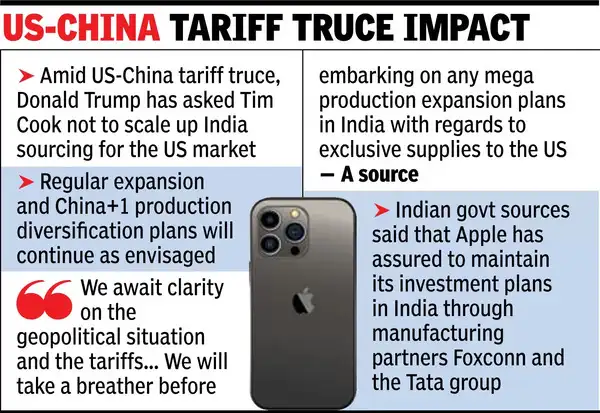India to review the iphone scale-up schemes for US supply

New Delhi: With the US and China agreeing to a tariff Trus, Apple is reviewing its aggressive plans in India. While “regular expansion and China +1 production diversification schemes will continue to concept”, sources stated that the iPhone strategy is especially prepared for the US market, “temporarily placed under review”.“We are waiting for the geopolitical situation and clarity on tariffs. Things are moving at a fast pace, and the US government’s stance on tariff has been suddenly changed, including China, where duty has decreased in the last few days.

US-China Tariff Trust Effect
The step comes as Trump – during his current Doha visit – said that he has asked Tim Cook not to source India’s iPhone when it comes to meeting the needs of the US market. Trump’s rigorous stance against outsourcing comes after Apple’s assurance for the US government that it will invest $ 500 billion in the US in the next four years, including to establish a new advanced manufacturing facility in Houston to produce a server.The company said it would add an additional 20,000 fares to the US by 2029.Surrounded by Trump’s tariffs, Cook recently declared the US as the mainstay for the supply of iPhone to India. In response to a question on the company’s quarterly earnings call on May 2, Cook said, “For the June quarter, we hope that most of the iPhones sold in the US will be India as the origin of India.”Following Trump’s latest statement, sources in the Indian government said that Apple has assured him to maintain his investment plans in India through manufacturing partners Foxconn and TATA Group. “Apple has said that there will be no ‘delay up’ in regular investment schemes starting during the coffee period after the introduction of the production-linked incentive (PLI) scheme for smartphones. China +1 diversification will continue.Only exclusive American supply is being reviewed. ,A senior government official told reporters that companies decide on their production facilities based on several factors, including revenue, productivity and competition, and are business decisions.




